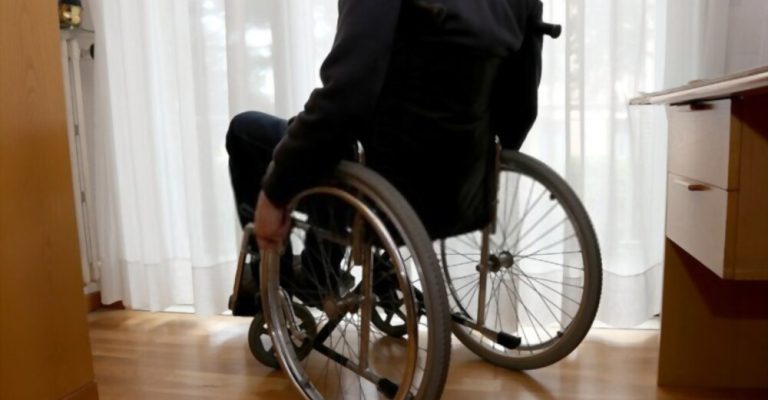
One of the most challenging and complicated medical conditions to manage is combating quadriplegia. Quadriplegic patients require highly professional home care to maintain their health, independence, safety, and overall quality of life. Such care can include a wide variety of strategies ranging from personalized therapy sessions & activities to preparing meals for easy consumption, all while considering any special needs they may have due to their condition. Read on as we provide detailed tips and techniques for family caregivers who provide full-time home care for a quadriplegic patient or loved one.
Quadriplegia, also known as tetraplegia, is a medical condition characterized by the partial or complete loss of function in all four limbs and the torso and pelvic organs. It occurs due to a spinal cord injury or damage to the spinal cord, usually in the cervical (neck) region.
The spinal cord is crucial in transmitting signals between the brain and the rest of the body. When the spinal cord is injured or damaged, the communication between the brain and the limbs is disrupted, leading to paralysis or significant impairment in motor and sensory functions.
The severity of quadriplegia can vary depending on the level and extent of the spinal cord injury. Higher-level injuries, such as those in the upper cervical region (C1-C4), can result in more extensive paralysis, affecting the individual’s ability to move their arms, hands, trunk, legs, and often their ability to breathe independently. Lower-level injuries (C5-C8) may allow for some preservation of upper limb function but may still cause significant limitations in mobility and agility.
In addition to losing motor function, quadriplegia can also affect autonomic functions, such as bladder and bowel control, temperature regulation, and sexual function. The impact on sensation can vary, with some individuals experiencing reduced or altered sensory perception below the level of injury.

Following are some of the tips that can be useful in managing people with quadriplegia.
In our technology-driven world, several innovative solutions can dramatically improve the quality of life for quadriplegic patients. For example, assistive technologies like voice-controlled devices, environmental control systems, and power wheelchairs with advanced features can offer people with quadriplegia a greater sense of independence and control over their environment.
Voice-activated home automation systems, for instance, can control lights, thermostats, door locks, and more. In addition, communication can be enhanced through eye-tracking software for computer access or speech-generating devices.
Exploring and incorporating these technologies require an open mind, some research, and possibly professional guidance. Working with an occupational therapist experienced in assistive technology can be hugely beneficial. The result, however, can be transformative, empowering the quadriplegic patient to engage with their surroundings in ways they might not have thought possible.
The role of physical therapy in quadriplegia care is well-established, but there are innovative therapies that go beyond traditional exercises. These include techniques like hydrotherapy, which uses the water’s buoyancy, resistance, and warmth to stimulate muscle activity and improve circulation, and music therapy, which can stimulate neural networks associated with movement and provide motivation and enjoyment.
More advanced options include robotics and exoskeletons. Robotic therapy devices can assist with repetitive motion exercises, facilitating neural plasticity and potential recovery of function. Exoskeletons can enable assisted standing and walking, which can have numerous physical and psychological benefits.
While such therapies might not be accessible or appropriate for everyone, exploring these options can open new avenues for physical well-being and recovery.
Managing pain is a crucial aspect of quadriplegia care, and there are innovative non-pharmacological approaches to consider. For example, mindfulness-based stress reduction (MBSR) and biofeedback have shown promise in managing chronic pain.
MBSR uses mindfulness, a form of meditation, to help individuals focus on their physical experience non-judgmentally. Biofeedback uses electronic sensors to monitor body functions like muscle tension and heart rate, assisting individuals in controlling these functions and thus managing pain.
These techniques require guidance from professionals trained in these methods. Still, with practice, they can provide powerful tools for managing pain, potentially reducing reliance on medication and its associated side effects.
Cognitive impairment is common in individuals with quadriplegia, often due to the initial neurological injury. Neuropsychological interventions can help improve cognitive function and thus enhance overall quality of life.
Cognitive rehabilitation therapy, for example, uses specific exercises to improve cognitive functions like attention, memory, and problem-solving. A neuropsychologist or occupational therapist usually guides these exercises and can be tailored to the individual’s needs and goals.
Cognitive stimulation therapy is another option, using activities and discussions in a group setting to stimulate cognitive functions. Research has shown this can improve mental acuity and social interaction.
The emergence of telehealth has brought about a new frontier in quadriplegia care. With this approach, quadriplegic patients can consult with healthcare professionals from their homes via video calls, phone consultations, or even messaging platforms.
This saves the time and effort of traveling to a clinic and facilitates more frequent communication with healthcare providers. From routine check-ups and consultations to physical therapy sessions and psychological counseling, a range of services can be provided via telehealth.
Additionally, online support groups and forums can provide a sense of community and shared understanding that might be hard to find locally. By sharing experiences and advice, individuals with quadriplegia and their caregivers can gain support and practical tips from others in similar situations.

Caregivers also need the basic knowledge and courage to deal with patients with quadriplegia, so their mental, physical, and intellectual health is also essential.
Providing care for someone with quadriplegia is an incredibly demanding role, both physically and emotionally. Caregivers must remember the importance of self-care. Without taking time to maintain their physical and mental well-being, they run the risk of burnout, ultimately hindering their ability to provide care.
Self-care can take various forms, such as regular physical exercise, a healthy diet, and adequate sleep. It’s also about taking time out for relaxation and recreational activities, whether reading, walking, listening to music, or pursuing a hobby.
Equally important is emotional self-care. Caregivers may find speaking to a therapist or counselor beneficial to discuss their feelings and stresses. Online support groups can also be helpful, providing a community of individuals who understand the unique challenges of caregiving.
Knowledge is power, especially when caring for a quadriplegic patient. The more caregivers understand the condition, its challenges, and its implications, the more effectively they can provide care. In addition, knowledge can alleviate the fear and anxiety that often accompanies the unknown.
Educational resources are available in various forms – from books and online articles to webinars and workshops. Health professionals involved in patient care are also valuable sources of information. Don’t hesitate to ask questions to understand better the patient’s specific needs and the best practices in providing care.
Maintaining open and transparent communication is critical in the caregiver-patient relationship. Discussing feelings, expectations, and concerns openly, with respect and empathy, is important. Both the caregiver and the patient should feel comfortable expressing their needs and boundaries.
Establishing regular ‘check-ins’ can be helpful. This might involve discussing the patient’s comfort, mental state, and any changes they’ve noticed. It’s also an opportunity for the caregiver to express any challenges or concerns they’ve encountered.
Caregiving can feel isolating, but it’s essential to remember you’re not alone. Establishing a support network can help alleviate the stresses and pressures associated with caregiving.
This network can include family and friends, other caregivers, or support groups. Don’t hesitate to ask for help when needed – whether it’s a few hours of respite care, assistance with chores, or someone to talk to.
Consider reaching out to professional services in your area as well. Respite care services, for instance, can provide a much-needed break. Skilled therapists and counselors can offer guidance and support.
As a caregiver, it’s crucial to have a toolkit of skills and strategies that can be adapted to various scenarios. This includes learning practical skills such as moving and positioning the patient safely, using adaptive devices, and performing necessary medical tasks.
But it’s not just about the physical skills. Emotional intelligence is also vital. This involves understanding and managing your emotions and empathizing with and responding to the patient’s feelings. Techniques like mindfulness and stress management can be powerful tools in the caregiving journey.
Taking on the role of caregiver is a transformative experience. Both the caregiver and the cared-for go through a lot of hardships together. But if you’re prepared, you can make it a rewarding experience for everyone involved. It’s a journey of constant learning and adapting; your dedication and effort make a difference for the person you care for.